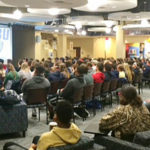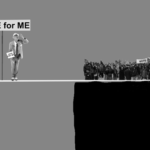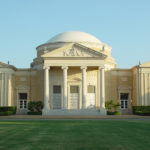Posted: 11/07/03
Spiritual sleuth studies violent religions to fight crime
By Sharon Schlegel
Religion News Service
TRENTON, N.J. (RNS)–Police were puzzled by the crime. A corpse had been disinterred in the cemetery, mutilated and left near a mausoleum covered with graffiti.
Eager for a trail to follow, police turned to Dawn Perlmutter, an expert on ritualistic murder and religious terrorism.
It turned out to be exactly the right move. Perlmutter immediately suspected the crime was linked to satanism and urged police to begin by talking to people at nearby stores selling occult books and symbols.
 |
| Police departments around the country call on Dawn Perlmutter to help identify evidence of religious rituals at crime scenes and find those responsible. |
The perpetrator soon was brought to justice.
Probing strange and violent crime scenes is commonplace for Perlmutter, director of the Institute for the Research of Organized and Ritual Violence and a consultant to law enforcement agencies across the country.
A soft-spoken, auburn-haired woman in her early 40s, she has an open, easy manner that gives no hint of her days studying gruesome crime scenes and the extremist religious and terrorist groups behind them.
Her 440-page book, “Investigating Religious Terrorism and Ritualistic Crimes,” appeared in bookstores last month. It is being billed by its publisher as “the first complete resource to assist in crime scene identification, criminal investigation and prosecution of religious terrorism and occult crime.”
“There are literally thousands of new religions, many of whose theologies advocate violence, springing up in this country today,” Perlmutter said in an interview.
“I know of at least 150 satanic groups in existence, and more are being formed every day. Many of the white supremacy groups hide behind a Christian facade, distorting that faith and advocating an apocalyptic view of the world.
“What concerns me,” she said, “is that people are now using the Internet to create their own extreme religions and find followers. I've tried to be careful not to disrespect any religion, but I do draw a very clear line between what's legal and what's illegal.”
She tries to look at each group's practices from its unique perspective, in order to lend some in-depth understanding of members' motives, she said.
The book explains the organizational structure of satanic clans and covens and probes vampirism, voodoo, the Goth movement, fetishes, neo-paganism, sacrifice and blood rituals.
Perlmutter also addresses recruitment policies and indoctrination techniques, a subject that deeply worries her, she said. “I know recruiters for these groups are visiting college campuses. And they're finding followers through the Internet among lonely, alienated kids. People have no idea how prevalent these groups are. Everyone, especially parents, needs help to understand what's out there.”
Perlmutter never set out to pursue a career linked to law enforcement and gruesome crime. She grew up in Ventnor, N.J., in a happy, traditional family and had a strong interest in art. In college, she became intrigued by the religious symbols and idolatry so prominent in ancient religious art, and this led to a growing interest in philosophy.
She started to see how many of those ancient blood- or sacrifice-related symbols were making their way into modern life, often in distorted fashion.
So she began work on a doctoral thesis titled “Graven Images: Creative Acts of Idolatry,” later published as a book. In it, she tackled such contemporary subjects as violence in film.
Fully expecting to spend her life as an academic, Perlmutter taught at several colleges. But her growing acclaim as a crime-scene consultant convinced her to work in that field full time.
It all started when a friend asked her to help a New Jersey police officer pal who was bewildered by a murder case.
Looking over some autopsy photos, “I saw immediately that the types of mutilation shown were indicative of ancient rites of tribal blood mutilation, which could represent a traitor who betrayed a tribe. I told him to look at local gangs,” she recalled.
When her hunch proved accurate, the officer invited Perlmutter to speak to a law enforcement-related agency.
“It was received well, and I was asked to speak to two more groups. Every time I spoke, someone started asking me about specific cases.
“That's when the light bulb went off,” she said. “I realized that, in this way, I would have firsthand access to cases that would prove or disprove my theory about the relationship between violence and the sacred.”
She explains the theory this way: “In all religions, there has always been some form of religious sacrifice, and contemporary ritual homicide often mimics and distorts that.”
By working with law enforcement, she surmised, she would have a chance to learn more.
Philosophically, Perlmutter is a proponent of “the Girardian theory, the premise that violence and aggression are intrinsic in human beings,” she said. But that doesn't mean personal violence is inevitable. Non-destructive outlets for those emotions are part of every culture, she said, pointing to football, movies and TV as healthy avenues for catharsis.
“What's happening today is these new religions are not just serving as outlets of aggression, they are also filling a spiritual need. They're providing an ideology and a belief system for people who are very out of control and need a way to justify violence and gratify those needs.
“I don't think it's an issue of too many guns or even of bad parenting,” she concluded. “I think there's a real spiritual void.”














We seek to connect God’s story and God’s people around the world. To learn more about God’s story, click here.
Send comments and feedback to Eric Black, our editor. For comments to be published, please specify “letter to the editor.” Maximum length for publication is 300 words.